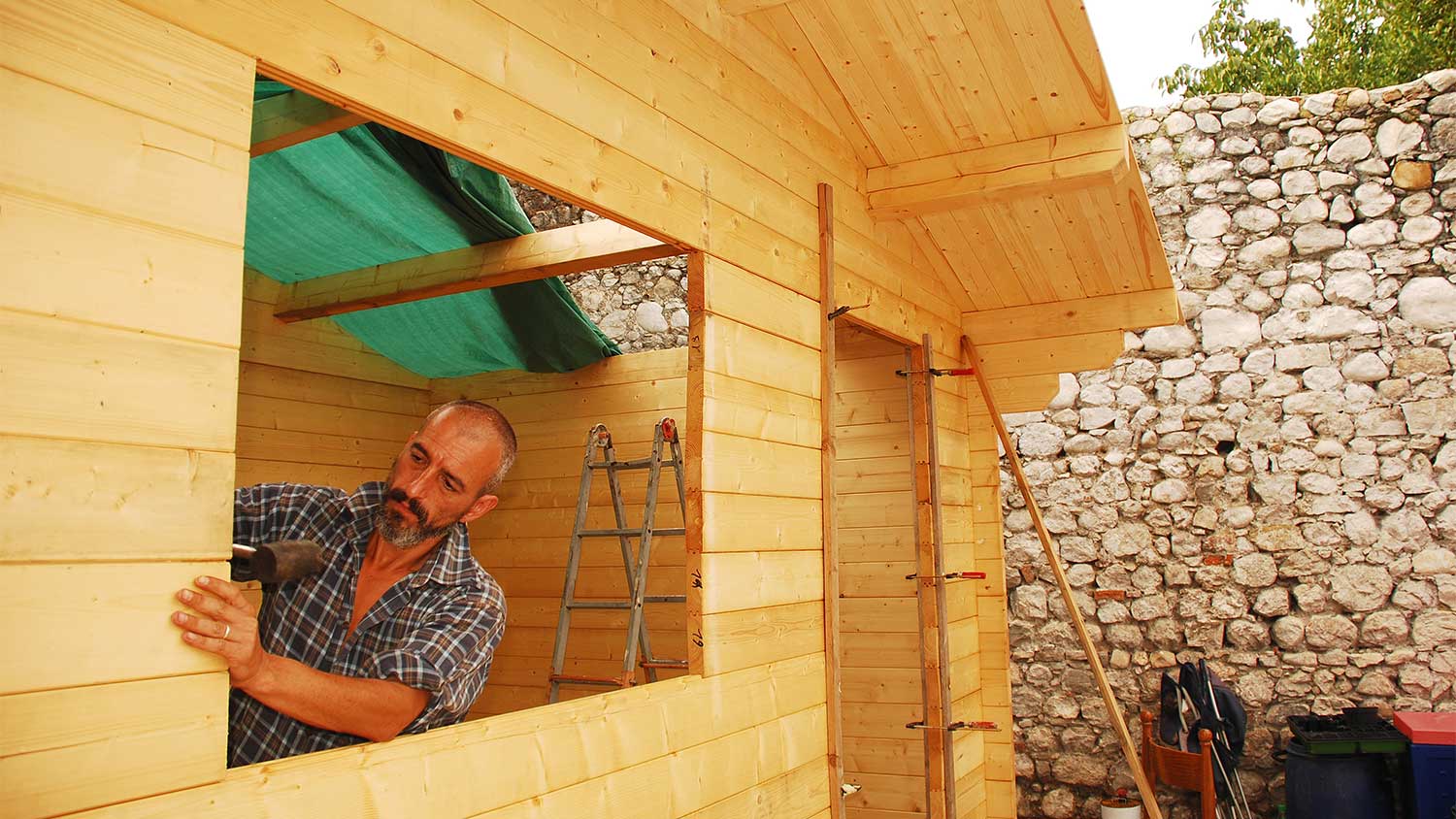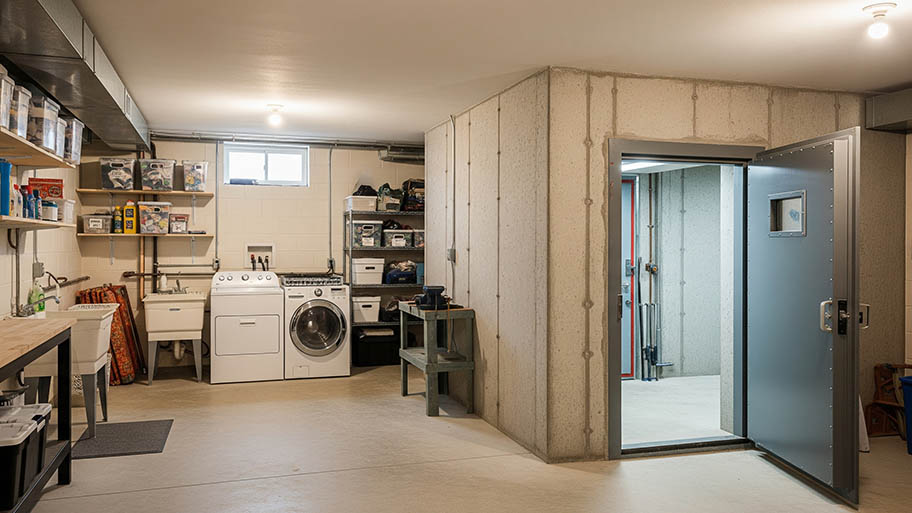
Your mobile home renovation cost will depend on size, scope, materials, and several other factors and can boost your home's value.
Be in the know about everything from tin snips to tie beams


Carpentry terms can make a DIY project easier or help when talking with a contractor
Carpenters often use a mix of hand tools and power tools, including saws, sanders, and jigs
Framing terms range from joists and rafters to studs and wall panels
There are five types of carpentry cuts: crosscut, curves, miter cut, resawing, and rip cut
Trim carpentry terms include the different types of moulding and decorative pieces for inside your home
If you’re preparing for a home remodeling project, knowing a few carpentry terms can help. It's nice to understand the industry lingo, whether you're tackling a DIY or working with a local contractor. From framing to trim carpentry, here are 58 common construction and carpentry terms you're bound to hear.
There are two main categories of carpentry tools: power tools and hand tools.
Power tools are any tool powered by a motor, compressed air, or engine. Here are common power tools used in carpentry and construction:
Circular (or skill) saw: A power saw that uses a rotating toothed disk to make straight cuts in lumber.
Miter saw: Used to make crosscuts and angled cuts with a mounted blade on a swing arm.
Table saw: A saw with a circular saw blade; the blade is set up to protrude through the top of a table which acts as a cutting surface.
Orbital sander: A power sander that sands in a random-orbit action to create a smooth surface
Power drill and drill bits: A tool that removes material by creating holes in a range of cylindrical sizes
Hand tools are any tool powered by your hand rather than a motor. For carpenters, their toolbox often includes these:
Jig: An aid used to clamp a workpiece or serve as a guide when cutting
Plane: A planar is used for smoothing a wood surface or joining two boards together
Carpenter’s pencil: A thick-leaded pencil to mark wood
Chalk line: A line covered in colored chalk dust that can be unrolled to mark straight lines on wood, metal, or concrete
Tin snips: Shears that cut sheet metal and other tough webs
Wood chisel: A sharp tool that shaves rough surfaces, chops out corners, and scrapes off glue
Other hand tools carpenters usually carry include a hammer, utility knife, tape measure, nail puller, square, and level.

Whether you’re building a house, shed, garage, or new addition, your framing supports the entire structure. Here are some standard framing and roof carpentry terms to know:
Blocking: To use short pieces of lumber to brace longer members.
Bottom plate: The lowest horizontal framing structure in the wall, also known as a soleplate and typically the same width as the top plate and studs
Ceiling joist: A wood or steel beam that’s positioned horizontally between the top sides of the wall frame. You can nail finished ceiling material and rafters to ceiling joists.
Doubled (or doubler): Two structural members nailed together to double the support strength.
Fascia board: A long wooden board behind gutters on a house that connects to the roof rafters
Gable: The most common type of roof that features a simple design where the rafters are the same length and pitch on each side and meet in the middle of the span; essentially, any roof that fits a standard triangle roof prototype would be considered a gable.
Dovetail joint: A strong joinery technique with tails and sockets used in log buildings, furniture, cabinets, and traditional timber framing
Header: A support beam located horizontally above a door, window, or another opening in a building
Girder: A basic support system used in a variety of construction projects. Usually made of steel in an L-shaped style of a cross-section, it improves strength and support for the weight it bears.
Joist: Parallel beams that support the ceiling and floor of a building, often made of wood or concrete in homes.
Load-bearing wall: Any wall in the structure that acts as foundational support for a load resting upon it; these walls are usually composed of sturdy materials, such as wood studs, brick, block, or concrete.
Non-load-bearing wall: Provides no significant support for any structures above it other than the support necessary to bear its own weight; also referred to as a curtain wall.
On center: The measurement from one structural member to another, often abbreviated as O.C.
Rafter: Any framing member of the roof; usually a beam that's part of the internal framework of a roof
Rise: The measured distance between a single step, staircase, or rafter. The rise is typically measured from a vertical angle.
Rough carpentry: Involves roofing, framing, formwork, and other difficult, large-scale structural projects that don't usually need to be polished or finely designed
Rough opening: All the leaves in a framing wall for an opening, such as a door or window; commonly abbreviated as R.O.
Sheathing: A board or panel material used to form a construction surface for building flooring, walls, and roofs.
Stringer: The primary support system for a staircase; the riser and tread components of the staircase are attached to the stringer to ensure full support.
Strut: A support or brace of scantlings lighter than a post, opposite of a tie beam
Stud: Vertical wood or steel boards that support a wall
Tie beam: A horizontal beam that connects two or more columns to prevent them from separating
Timber: Wood prepared for a building or carpentry, usually processed into beams and planks
Top plate: A horizontal framing member at the upper portion of a stud wall, typically the same width as the bottom plate and studs
Truss: A single piece of a pre-manufactured roofing system, which is usually built off-site and delivered to the site for installation
Wall panel: Section of wood-framed interior and exterior walls built in a factory for the specific design needed
Whether you’re building a picture frame or a set of cabinets, there are certain types of cuts that make the project easier. Here are the five basic carpentry cutting techniques:
Crosscut: A saw cut that goes across the grain of the wood
Curve: A cut that is not straight, usually made with a bandsaw or a jigsaw
Miter cut: A simple, angled cut at the end of a board; used in slope roofing.
Resawing: Sawing a board on its edge to make the board thinner
Rip (or rip cut): A saw cut that follows the grain of the wood; the opposite of a crosscut
The decorative pieces of wood inside a home improve its appearance and add style. Here are the main trim carpentry terms to know:
Baseboard: Decorative trim that you mount at the base of your walls around the perimeter of a room to cover the gap between the wall and the floor
Casing: Decorative trim wood that goes around door and window openings on interior walls
Chair rail: Horizontal moulding fixed to the wall around the perimeter of a room, also known as a dado rail or surbase.
Crown moulding: Decorative trim at the top of cabinets and walls around the perimeter of a room
Panel moulding: A variety of moulding profiles used to embellish a flat surface, such as a door, wall, or mantel.
Return: A small piece of trim that's cut and glued at the end of a piece of trim to hide the end grain, also known as the baseboard return
Shoe moulding: A thin strip of moulding placed at the bottom of a baseboard to close the gap between the baseboard and floor, often curved or rounded
Wainscoting: Wooden paneling placed on the lower half of the walls in a room
While there are hundreds of carpentry terms, here are a few popular terms that’ll pop up more often than others:
End grain: Wood grain seen when cutting across growth rings; usually cut at a 90-degree angle to the grain.
Finished (or finish carpentry): Carpentry that focuses on fine woodworking, cabinetry, model building, parquetry, and joinery
Journeyperson: A carpenter who has completed an apprentice program or who has extensive experience
Pilot hole: A preliminary hole made by a drill to guide a larger drill or hole-making tool
Plumb: A line that is precisely perpendicular or vertical to a level horizontal line
Punch list: A task list that organizes a construction project, also known as a snag list
Wood grain: The pattern or longitudinal arrangement of wood fibers
From average costs to expert advice, get all the answers you need to get your job done.

Your mobile home renovation cost will depend on size, scope, materials, and several other factors and can boost your home's value.

When you’re looking to make a safer space for your family during storms, tornado shelter costs may come to mind. See how much you can expect to pay here.